For many students in the GW School of Medicine and Health Sciences (SMHS), summer is a time away from training when they can embrace unique experiences through internships, some of which were organized by the Office of Student Opportunities. These experiences, whether abroad or state-side, vary from clinical settings to offices to laboratories – and they often influence students’ decisions on the road to becoming medical professionals. Read on for a glimpse of these summers of discovery.
All 2012 summer internship images are available to view on Flickr.
Mai Abdelnabi
Mai Abdelnabi, who is in the medical education track, spent her summer working on a project called “The experience of non-traditional medical students in the clinical setting.” The purpose of her project was to understand the difference between the experiences of mature-age, third-year medical students on clinical rotations versus the experiences of traditional students. According to Abdelnabi, mature-age medical students are typically in their 30s or 40s and may have established themselves in another career before pursuing medicine. Abdelnabi wanted to see how the mature-age students’ life experiences may affect their interaction with patients. A traditional student is defined as a student in their early 20s.
As part of this research, Abdelnabi interviewed mature-age , third-year medical students and a cohort of traditional medical students and compared emerging themes. She hopes her project can potentially be a step towards establishing new or even better ways that medical schools could select applicants for admission.
Ashley Alker
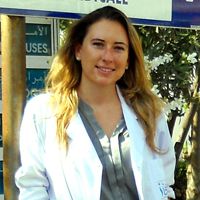
Ashley Alker, who is in the global health track, spent five weeks at the Ramon y Cajal Hospital in Madrid, Spain and three weeks at the Ibn Rochd Hospital in Casablanca, Morocco this summer. Alker, who has her master’s in public health, is analyzing vaccination rates of immigrants in Madrid, many of whom come from Morocco, and doing a qualitative comparison of the Spanish health care system with that of Morocco. In both hospitals, she was responsible for shadowing doctors and interviewing patients regarding the quality of the health care they received. Her eventual goal is to compare her results with the vaccination rates of immigrants to the United States.
“This summer not only further intensified my passion for international medicine, but also my interests in culture and language,” Alker said. “My work abroad has reminded me of the importance of medicine in the creation of international bonds, during a significant moment in the process of globalization.”
Crystal Allison
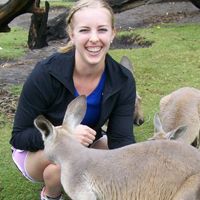
Crystal Allison, a senior in the physician assistant/master in public health program, traveled to Perth, Australia this summer to work with Australian physician Moira Sim, M.D., also associate professor at Edith Cowan University, in what is the equivalent of a family practice in the U.S. Allison’s time was spent seeing patients in a clinical setting and making sure that those patients were up-to-date with the preventative health screenings and testing recommended by the Australian government. Allison sat down with patients to conduct physicals, review their health problems, and discuss with them any recommendations. Allison and Sim would discuss each patient individually and review their recommendations, as well as the results of these outcomes.
Most importantly, Allison said her trip enabled her to educate the people of Perth about the vital role physician assistants play in the medical field. She also said her experience greatly improved her clinical skills, as well as provided her with the opportunity to learn what it’s like to work in a health care system different from the U.S.
Michael Codini

Michael Codini, who is in the emergency management track, spent nine weeks interning at Monteprincipe Hospital in Madrid, Spain. In addition to researching the city’s emergency response system and its handling of the 2004 train bombings, he had the opportunity to shadow doctors in internal medicine and observe a variety of surgeries.
“In addition to enabling me to improve my Spanish skills, my experience has afforded me extensive clinical knowledge and training that will undoubtedly benefit me both in English and Spanish speaking contexts, not only in medical school but throughout my medical career,” Codini said.
Douglas Herrin
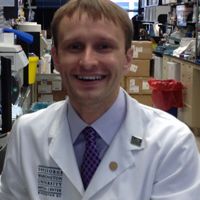
Douglas Herrin, who is in the emergency medicine track, spent 12 weeks as a fellow at the Vaccine Research Center (VRC) at the National Institutes of Health, whose mission is to conduct research that facilitates the development of effective vaccines for human disease, particularly AIDS. Herrin was responsible for defining vaccine immune response signatures by looking at innate and adaptive immune responses in a randomized phase 4 human clinical trial of the HPV vaccine and assays for VRC’s candidate AIDS vaccine.
“I have learned that next generation technologies can increase our understanding of immune responses, which will enhance our understanding of vaccine immunology and facilitate vaccine development for emerging pathogens or HIV/AIDS and HPV,” Herrin said. “This knowledge may generate novel hypotheses in basic bench-side research, shape public health strategies and policy discussions, and even have applications in designing medical countermeasures.”
Mindy Hsiao

Mindy Hsiao, who is in the integrative medicine track, spent her summer building community awareness for Animal Assistant Therapy (AAT). She produced a 15-minute educational video on the benefits of AAT, specifically how dog therapy can be implemented in Washington D.C. service facilities to improve a patient’s social, emotional, and cognitive functioning. Hsiao presented her project to the following D.C. facilities: N Street Village, Bread for the City, the GW Breast Care Center, and the Community Council for the Homeless at Friendship Place.
“My goals are to educate and advocate for pet therapy and to expand the use of this service as it is cost-effective and has shown to have tremendous benefits to a wide range of patients,” said Hsiao.
Pamela Hu
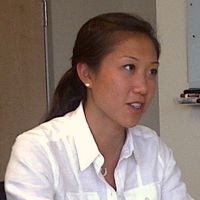
Pamela Hu, who is in the health policy track, spent eight weeks interning at Applied Policy, a health policy and reimbursement consulting company in Alexandria, VA. As a health policy intern, she conducted research on Medicare reimbursements, studied payment models for specific health care services and products, and assisted with ad-hoc projects for clients. “ Interacting with health care providers, policy makers, and various other actors in the health policy world has helped me better understand the complexities of health policy implementation and its consequences for patients and providers,” Hu said.
Nathanael Leo

Nathanael Leo, who is in the research track, worked for 12 weeks in the lab at the Children’s National Medical Center in Washington, D.C. to examine the correlation between African-American children who are carriers of the Apolipoprotein L1 (APOL1) gene, and have HIV-associated nephropathy (HIVAN). Leo and his colleagues explored the influence of variants in APOL-1 gene, a gene that is a minor apoprotein component of HDL (High-Density Lipoprotein) or “good cholesterol” and how it effects the development of HIVAN in African-American children. HIVAN is kidney disease that develops in association with HIV.
“Because HIVAN is prevalent in African-American children, our goal was to collect more information about the APOL1 gene and assess how it affects their health. We hope to further understand the gene and determine if it can serve as a biomarker to predict certain bone health issues, such as fracture risks and Vitamin D levels,” said Leo.
Larissa May
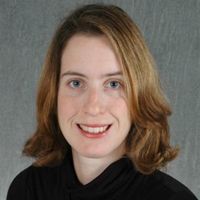
Larissa May, M.D., M.S.P.H ., assistant professor of emergency medicine and associate director of clinical research in the department of emergency medicine at GW and a student in the Clinical and Translational Research p rogram in the department of clinical research and leadership in health sciences, spent her summer working on an independent study elective. May worked with the Infectious Disease Society of America to design an internship focused on infectious disease policy. As part of her project, May conducted research on infectious disease diagnostics policy, emerging trends, and interviewed key leaders in microbiology diagnostics research.
Because of her experience, May says she gained a greater appreciation for the policy aspects of developing and evaluating new infectious disease diagnostic technologies, including the regulatory and ethical issues surrounding molecular diagnostic testing and the importance of advocacy in translating evidence-based practice to the community.
Beatrix Ohienmhen
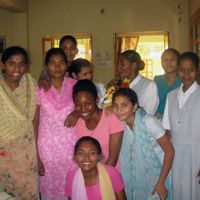
Beatrix Ohienmhen, who is in the global health track, spent eight weeks in the village of Janampet in Andhra Pradesh, a state in southeastern India. Her project, called Health Promotion and Prevention, involved interactive training sessions on personal hygiene, Dengue fever, and Typhoid fever in a school run by St. Lucy’s convent. She taught third, eighth, and tenth class (ages 5 to 18) about the transmission of disease, the impact of diseases on health, and the importance of personal hygiene.
“I crafted my teaching style to involve hands-on activities for the students,” Ohienmhen said. “For the personal hygiene lesson, I taught the children the importance of hand washing. I used glitter as a fun way to demonstrate how germs can be passed from one person to another without their knowledge.” Ohienmhen conducted surveys at the end of the program to analyze its effectiveness and hopes to have helped the village’s children become invested in health maintenance.
Aishat Olatunde
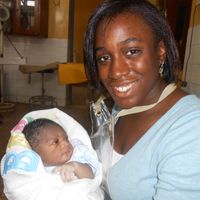
Aishat Olatunde, who is in the communityhealth track, spent three weeks working at Surulere Medical Center, a community maternity clinic in Ilorin, Nigeria. At the clinic, she accompanied the attending physician on rounds, saw outpatients for various ailments, and even and assisted with the delivery of a baby boy. “This was my first time traveling abroad so it was very eye-opening to witness the number of obstacles that doctors in a developing country need to overcome to provide care to their patients,” she said. “It was a really great learning experience!”
For the following five weeks, Olatunde worked at Planned Parenthood of Metropolitan Washington as a part of Medical Students for Choice’s Reproductive Health Externship. The goal of the externship, where Olatunde assisted with procedures and provide counseling for patients, was to gain clinical exposure to abortion care with the aim of incorporating it into women’s general reproductive health care services.
Caitlin Sherman
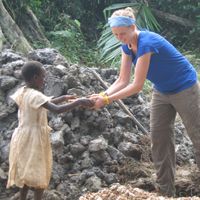
Caitlin Sherman, who is in the global health track, spent eight weeks in the village of Ntenjeru in rural Uganda. She volunteered with Omni Med, an organization that trains Village Health Teams (VHTs) – their term for community health workers – to empower local communities to improve their own health and create a sustainable and measurable health impact. Sherman was responsible for teaching modules, as well as supporting local health personnel who run the VHT trainings.
“The Omni Med program is particularly important to me because it is sustainable,” said Sherman. “I was able to train members of the community to carry out health practices and maintain the health and safety of the community in the future. By passing on my knowledge to someone who is staying in the community, I know I will leave a lasting impression on the community even after I leave.”
Kristen Thomas
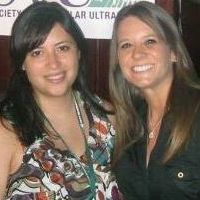
Kristen Thomas, a senior in the sonography program, served as a guest blogger for the Society of Vascular Ultrasound (SVU) Annual Conference in National Harbor, Md., June 7 - 9. Thomas managed the SVU blog in an effort to showcase the conference’s events and speakers. She also provided recommendations on activities that attendees could take advantage of during their downtime. A large part of her job was to post pictures from the different events, recap the sessions and lectures, and provide fun facts about Maryland’s National Harbor. Thomas also helped coordinate a group of students from the GW sonography program who volunteered during the conference to coordinate extra programs and run the early morning and lunch sessions.
Her goal was to make sure that the blog provided as much information as possible to ensure that all attendees made the most of their time while at the conference. She also used her experience at the conference to take advantage of the abundance of networking opportunities.


